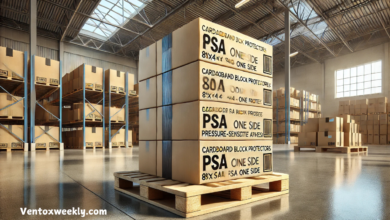Temperature-Sensitive Logistics: Inside the 10 x 40 Loading Dock with Climate Control Storage

In today’s fast-paced commercial and industrial environment, efficient storage and streamlined logistics are more critical than ever. A 10 x 40 loading dock with climate control storage is ideal for businesses that handle temperature-sensitive goods and require reliable and accessible warehousing options. Whether you are in the food industry, pharmaceuticals, electronics, or art and antiques, this specialized storage and loading dock configuration offers the perfect combination of functionality, efficiency, and protection. This comprehensive article explores everything you need about a 10 x 40 loading dock with climate-controlled storage, from specifications and features to benefits and industry applications.
What is a 10 x 40 Loading Dock with Climate Control Storage?
A 10 x 40 loading dock with climate control storage refers to a 400-square-foot dock area specifically designed for loading and unloading goods while maintaining a consistent internal temperature. The climate control feature ensures product integrity, especially when dealing with perishable or sensitive items.
This type typically features insulated dock doors, sealed dock levelers, and an integrated HVAC or refrigeration system to maintain a stable environment regardless of external weather conditions.
Key Specifications and Features
Dimensions:
- Size: 10 feet wide by 40 feet long
- Area: 400 square feet of operational space
- Dock Height: Generally between 46 to 52 inches to align with standard freight trucks
Dock Doors:
- Width: 8 to 10 feet
- Height: 8 to 10 feet
- Allows access to various trailer sizes
- Insulated for climate control efficiency
Dock Levelers and Seals:
- Vertical storing dock levelers
- Foam or inflatable dock seals
- Shelter hoods to prevent air leaks
Climate Control Systems:
- HVAC systems or industrial refrigeration units
- Temperature range control (from refrigerated to heated settings)
- Digital monitoring and thermostat regulation
Construction and Insulation:
- High R-value insulated walls and doors
- Weatherproof materials to handle external conditions
- Anti-condensation and humidity control mechanisms
Advantages of a Climate-Controlled Loading Dock
A 10 x 40 climate-controlled loading dock offers several strategic advantages for businesses that rely on product integrity and timely deliveries.
- Temperature Regulation:
- Essential for perishable goods like food, pharmaceuticals, and chemicals.
- Prevents product spoilage and ensures safety.
- Operational Efficiency:
- Streamlined loading and unloading process.
- Reduced handling times and labor requirements.
- Energy Efficiency:
- Insulated dock seals and levelers help retain interior temperatures.
- Reduces energy bills and carbon footprint.
- Improved Safety:
- Reduced risk of condensation-related hazards.
- A controlled environment lowers the chances of worker injuries due to slippery surfaces.
- Compliance with Regulations:
- Helps meet FDA, OSHA, and other regulatory standards for temperature-sensitive goods.
- Extended Storage Capabilities:
- Allows temporary storage of goods awaiting shipment.
- Acts as a staging area for quality control and packaging.
Ideal Use Cases and Industries
The functionality of a 10 x 40 loading dock with climate control storage makes it suitable for a variety of industries:
- Food and Beverage:
- Dairy, meat, seafood, produce
- Prevents spoilage and maintains freshness
- Pharmaceuticals and Biotechnology:
- Requires strict temperature compliance
- Maintains product efficacy and shelf life
- Electronics:
- Temperature-sensitive components like semiconductors and batteries
- Prevents condensation and corrosion
- Art and Antiques:
- Protects from humidity and temperature fluctuations
- Maintains integrity of valuable or delicate items
- Cosmetics and Personal Care:
- Temperature-sensitive ingredients
- Ensures product stability and consistency
Key Design Considerations
When planning to install or upgrade to a 10 x 40 climate-controlled loading dock, several factors should be considered:
Site Location and Access:
- Ensure ease of access for delivery trucks and trailers
- Consider apron space (typically 120 ft) for maneuverability
Structural Design:
- Use of corrosion-resistant materials
- Adequate drainage and ventilation
Energy Efficiency Features:
- LED lighting
- Smart thermostats
- Solar panels or other renewable options (where applicable)
Safety Measures:
- Fire suppression systems
- Non-slip flooring
- Emergency lighting and exit signs
Security:
- Surveillance systems
- Access control gates or smart locks
- Alarm systems
Maintenance and Upkeep
Regular maintenance of the loading dock and climate control systems ensures long-term functionality and efficiency.
Routine Checks Should Include:
- HVAC system servicing
- Inspection of dock seals and levelers
- Structural integrity assessments
- Regular cleaning to prevent mold and mildew
Preventative maintenance reduces downtime and extends the lifespan of your equipment.
Cost Considerations
The cost of a 10 x 40 loading dock with climate control storage can vary widely based on factors such as location, features, and construction materials. Here’s a rough breakdown:
- Base Construction: $20,000 – $50,000
- Climate Control System: $10,000 – $30,000
- Insulation and Sealing: $5,000 – $15,000
- Security and Monitoring: $3,000 – $10,000
- Total Estimated Investment: $40,000 – $100,000+
Obtaining multiple quotes and consulting with professionals experienced in warehouse and loading dock construction is advisable.
Future Trends and Innovations
With sustainability and technology taking center stage in logistics and warehousing, the following trends are shaping the future of climate-controlled loading docks:
- Automation and Robotics
- IoT-Based Temperature Monitoring
- Energy-Efficient HVAC Technologies
- Sustainable Building Materials
These advancements are expected to enhance operational efficiency, be sustainable, and be compliant with future regulations.
Conclusion
A 10 x 40 loading dock with climate-controlled storage is a strategic asset for businesses that prioritize product integrity, safety, and operational efficiency. It bridges the gap between logistics and preservation, ensuring that goods are handled in optimal conditions from start to finish.




